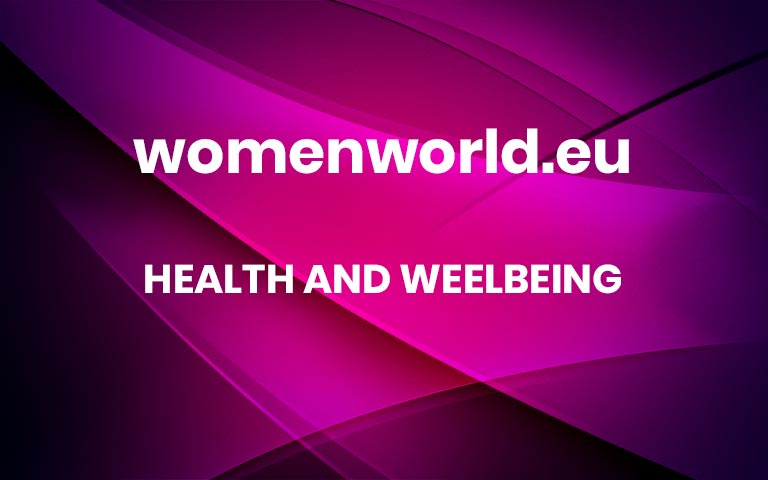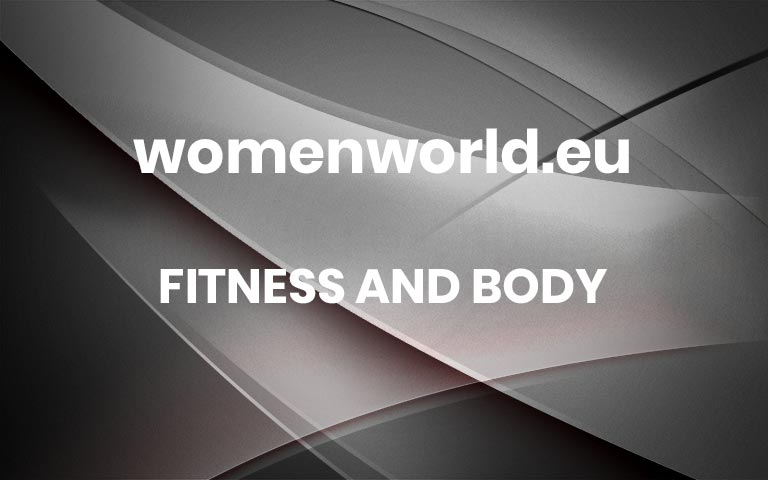Founder of Superhuman app, Mimi Bouchard discusses her pioneering approach to meditation.
What do the first 30 minutes of your day look like, your morning routine?
I’m a big believer in a strong morning routine. I always say that your mornings create your days, your days create your weeks, your weeks create your months, your months create your years – and you guessed it – your years create your LIFE. Seeing your mornings from a bird’s eye view really helps you understand the compound effect of how powerful your mornings really are. That being said, my mornings always consist of low screen time, writing and some kind of meditation. Some mornings I combine the last two by doing a Superhuman Writing Meditation™, which is amazing for the mornings I’m not feeling like free-writing. I also love a classic motivational morning seated meditation, but lately I’ve been veering towards the Getting Ready Meditations™, especially if it’s a busy AM. One more type I often do in the mornings is our famous Superhuman Walking Meditations™ – I couldn’t forget to mention that! My morning routine has a lot of general consistency but with wiggle room on the details, depending on how I’m feeling each day. I’m not naturally that consistent as a human so doing it this way helps me actually commit and it feels intuitive to my needs.
You previously had a very different life – tell us what the key to transformation was for you?
The key to my crazy “before and after” transformation is simple: I simply became the kind of person that had what I desired. By becoming that person, creating the new “self-image”, and effortlessly taking the actions that new Mimi would take… I transformed every single aspect of my life. I radically changed my body and health, my relationships, my career and finances, the impact I had on the world and the relationship I had with myself. Everything changes when you change your identity. Nothing changes when you continue being the “old self”. This realization alone was the catalyst to my success. This is what “manifestation” really is: become the kind of person that has what you want, and soon enough you’ll create the life you seek.
What were the steps to launching Superhuman and do you remember the day you decided to take the leap of faith to launch an app?
My experience as an entrepreneur was not a linear journey to success. I tested many different businesses before getting into the app space, all of which I am so deeply grateful for as they taught me a lot about myself, business, failure and ultimately what it takes to create a massive success.
I decided to launch an app after much trial and error and experimenting with what stuck with my audience. The more I tried, the closer I got to the clarity I seeked. V1 of Superhuman was actually a health and wellness subscription platform called Mimi Method. I had offered my unique guided meditations right at the bottom of the platform to add some extra value to my subscribers, not thinking much of it. Fast forward six months, the meditations quickly became the most popular category in the platform and I decided to relaunch as solely a meditation app, called Superhuman. I wanted to go global and removing myself from the brand would help me get there. When it comes to developing the app, I definitely didn’t have $300k+ laying around at the beginning to custom develop the app from scratch. I had to get resourceful! I ended up negotiating a licensing deal with an overseas development agency to kickstart Superhuman. I knew there had to be a way to create a custom experience until I could afford my own app. This was a year-and-a-half ago. Now, I’m proud to share that we are launching a new version of the Superhuman app in November 2022, 100% owned by us, created by an epic team of California-based developers. It’s wild how fast everything has grown.
There were so many steps to creating this business. I don’t even know where to start! But yes, to answer your question, I do vividly remember the day I decided to switch everything over to the new Superhuman brand. I was sitting in my parked car on a quiet road (this is always where I do my best thinking) and I felt the enormity of this decision, ready to go all in. I knew, deep in my gut, that this was just the beginning of something way bigger than me.
When you launched were you surprised by how quickly it scaled?
My honest answer? No. I wasn’t surprised. I knew it was going to happen. I have a strong intuition and I am genuinely the poster child of this work I teach. I attracted my company’s success in every way possible. Superhuman is only aligned with success. Big, quick, epic success. We haven’t even done any paid marketing yet. The wild growth has been 100% organic up to this point. If this isn’t proof that the work works, I don’t know what is! Owned and earned media have been how we’ve grown so quickly. Word of mouth has been HUGE for us. The product is life-changing, and when people consistently use the meditations – they see radical change. It’s just what happens. That being said, we are now exploring paid media and can’t wait to reach more people with this work!
Your meditation technique is pioneering. Tell us more.
Superhuman is different to every other meditation app out there in more ways than one. I like to say it is the meditation app for “people that don’t like to meditate”. The main differentiators are how you use these meditations and how they feel to listen to them. I almost didn’t even call the product “meditations” because they’re so much more than that. Ultimately, I wanted to meet the customer where they are so we are calling them meditations for now – but they really are a totally new pillar in the sound industry. I like to call our content “functional audio”. Listen to it wherever, whenever and feel the shift instantly. We offer 16+ different categories of meditations for every single moment of your day. From Cooking + Cleaning Meditations to Workout Meditations… to Getting Ready Meditations and Legs Up Wall Meditations (for lymphatic drainage!). This app quite literally has it all.
Here at Superhuman, we don’t believe your eyes need to be closed and you need to silence your mind to meditate. We are redefining meditation by offering energizing, motivational content that is designed to give you the benefits of changing your energy without needing to change a behavior Most of us have downloaded and even paid for a meditation app without ever sticking to it (myself included). I found that many of these traditional meditations weren’t fun to do. They just added another layer onto my to-do list, which ended up stressing me out more because I would resist doing them. They weren’t enticing, I hated thinking about nothing and I didn’t feel different after. I created these Superhuman meditations for people just like me – people that want to visualize their abundant, wealthy and blissful futures in a way that feels good. And effective. Superhuman meditations are backed by science. They truly transform you by helping you change your self-image. Check out our website to see videos from our scientists + researchers!
What is the most popular meditation, and can you see when the majority of people meditate?
The most popular meditation changes week-to-week. We upload new content every single day so our users are always trying something new. Some weeks it’s a Walking Meditation (the one titled “Transform Into Your Future Self” is amazing), other weeks it’s one of our OG Morning Seated Meditations. A popular topic is Wealth + Abundance – our listeners love money manifestation meditations. They really help you uplevel your vibration, opening you up to new potentials and opportunities in your life. I love those, too. Magical things always happen when I do them consistently. Everything is energy. When it comes to time of day, we generally see a spike in the mornings as our listeners like to set the tone for their day with Superhuman. A huge chunk of our members actually use the app 2-5 times per day. Our MAU + DAU stats are very much above industry standard because of this.
What has been the scariest moment to date and what enabled you to move through that fear and continue to scale and grow both professionally and personally?
There have been so many terrible moments where something’s gone wrong and it’s been anxiety-inducting to deal with. That’s just life running a tech startup! This stuff happens all of the time. From protecting ourselves legally when being attacked for no reason, to dealing with an old contractor that went rogue and deleted hundreds of our mediation files, to suing copycat businesses, to worrying about user migration when moving from developer-to-developer… The “stresses” are seemingly endless. There isn’t just one that comes to mind. We haven’t had one disastrous problem and we’ve persevered for all of the “medium” to “small” ones. I feel thankful that we’ve set ourselves up very well from the start, which mitigates a lot of risk for future issues. When it comes to me dealing with all of this fear and stress that comes with running a fast-growth business, I just do it. I move forward no matter what the emotions. There’s no other option for me. I just need to continue building my thick skin and put my CEO hat on whenever a problem needs to be solved. This attitude of “keep moving forward and finding solutions” is what has got me here, and what will continue to help me and my business succeed. Giving up is not an option.
How do you balance the creative and commercial sides of the business and do you feel more drawn to one than the other?
This is a great question! I’m a visionary. The creative stuff is what I thrive doing most. I can do it anytime and I can get into the zone fast, it’s what I’m drawn to. Most days I work on the business during the day and then record the meditations in the evening when the rest of the world is asleep. Most of my focus actually needs to go into the high-level parts of the business. I feel the product creation is effortless for me, it really just flows out super easily. I’ve grown to love the more commercial side of it all, but it is a lot to work on both at the same time. Thankfully I have a great team member that takes on more of the “integrator” role, and we are continuing to hire fast to give me more “visionary” time. I try to work on the business, not in the business. This is how I move the dial.
What would be your advice to others wanting to launch an app? Should they have a website first as it’s such a huge investment – how can you help guide others to grow organically?
My best advice would be figure out your USP (unique selling proposition) and offer something that is different to what else is out there. Uniqueness is massively important in the wellness industry. It’s saturated. It’s the best way you’ll truly stand out. Make it something that you’re passionate about, that helps others. The more people you help, the more your business will grow.
I’m a big believer in testing your product and the market diligently before investing a large amount of money into it. I’ve learnt this the hard way from my involvement in other business in the past, it’s essential. Even if you think your product is absolutely incredible, you must test it and see how the public reacts before you invest your life savings into making it work. Start with a website. There are loads of subscription-template sites you can use for a minimal monthly fee. See how people react. Take note. Pivot. Repeat. Superhuman is not just a creation I blindly came up with. It’s a creation influenced by the feedback I got along the journey, too.If the product is good enough, you’ll get all the organic marketing you’ll need through word of mouth. Make it so good that people can’t stop talking about it! If you’re needing guidance and wanting to go all in on a career in wellness, I highly suggest checking out www.yessupply.co/mimi – it’s a certification programme that’ll help you step-by-step get to where you want to go. I’m also recording an exclusive masterclass on this exact topic, “creating a multi-million dollar wellness business”, for users that sign up through that link.
What have been the biggest challenges to date and how did you overcome them?
One of my biggest challenges has been hiring. I have very high standards for the people I take on my team. There’s a lot of potential being part of the core Superhuman team right now, and the fact that this business is doing so well is making me really picky. The team is everything. It’s been a challenge hiring because I’m looking for extraordinary humans that fit the roles perfectly. I don’t want to have any doubt when hiring, which isn’t great because I tend to overthink things. It’s time consuming interviewing so many people, and it’s something that is difficult for us right now because we are so darn busy. I’m hopeful we’ll continue finding amazing talent soon! It’s a priority for us right now.
How have you found social media in terms of supporting brand growth?
Social media has been huge for our growth. The virality of our customers’ organic content has created a major buzz around the brand. We definitely wouldn’t be where we are today without our customer’s love for the product and social media’s ability to share that love on a major scale.
How do you approach scaling without compromising on quality?
One of the reasons I love the business model of a digital product paid via subscription is because you can scale really easily. Unlike a physical product that needs inventory and manufacturers, the app business is a lot more forgiving. We could gain 10,000 new members overnight and be fine. Of course, our devs are always on call for any new bugs, but ultimately the product is built well and there’s low risk for quick growth. The beauty of consistent revenue every month from the subscription model means that we have stability as a business and can project future minimum sales well, resulting in investment decisions to continue improving quality. It’s only getting better and better from here!
What advice would you give to your younger self?
Only take advice from people that have what you want and start taking 100% responsibility for your life. Those two pieces of advice are life-changers.
When you travel – how do you stay consistent in your morning routine and what essentials do you need to take with you?
I’m constantly travelling – I’m actually in an airport right now as I write this! It’s incredibly important for me to stay consistent while on-the-go. I try to uncomplicate things and keep it super simple as this helps me stay consistent. I’m not perfect and definitely still go days without my routine sometimes, but keeping it simple reduces the amount of days that happens. All I need to keep my routine going when I travel is headphones, my Superhuman app, a notebook + a pen.
If you could recommend a game changer (or three) of a book that truly helped you change your life what would it be?
There are so many incredible books to choose from! If you’re just starting out on your personal development journey, I always suggest The Success Principles by Jack Canfield. I call this one my bible. It’s so easy to read and digest and it’s great for beginners. If you’re looking for something with more depth, read Becoming Supernatural by Dr. Joe Dispenza.
This is The Pioneer Issue – what does this mean to you and who else to you is pioneering?
To me, being a pioneer in an industry means creating something through “out-of-the-box” thinking that can help more people around the globe. Pioneers are opportunity-seekers and industry disruptors. Pioneers teach us that we don’t need to stick to what’s always been done. Improving and adjusting where needed is essential for growth. I believe being a pioneer is the greatest way to have as much impact as possible. There are so many incredible “pioneers” – it’s tough to just think of one. Sarah Blakely pioneered the shapewear industry, Jeff Bezos pioneered the e-commerce industry, etc. Each and every one of these “pioneers” in business inspire me greatly.
October’s – The Pioneer Issue – Download Now
– For more on luxury lifestyle, news, fashion and beauty follow Emirates Woman on Facebook and Instagram
Images: Supplied More




